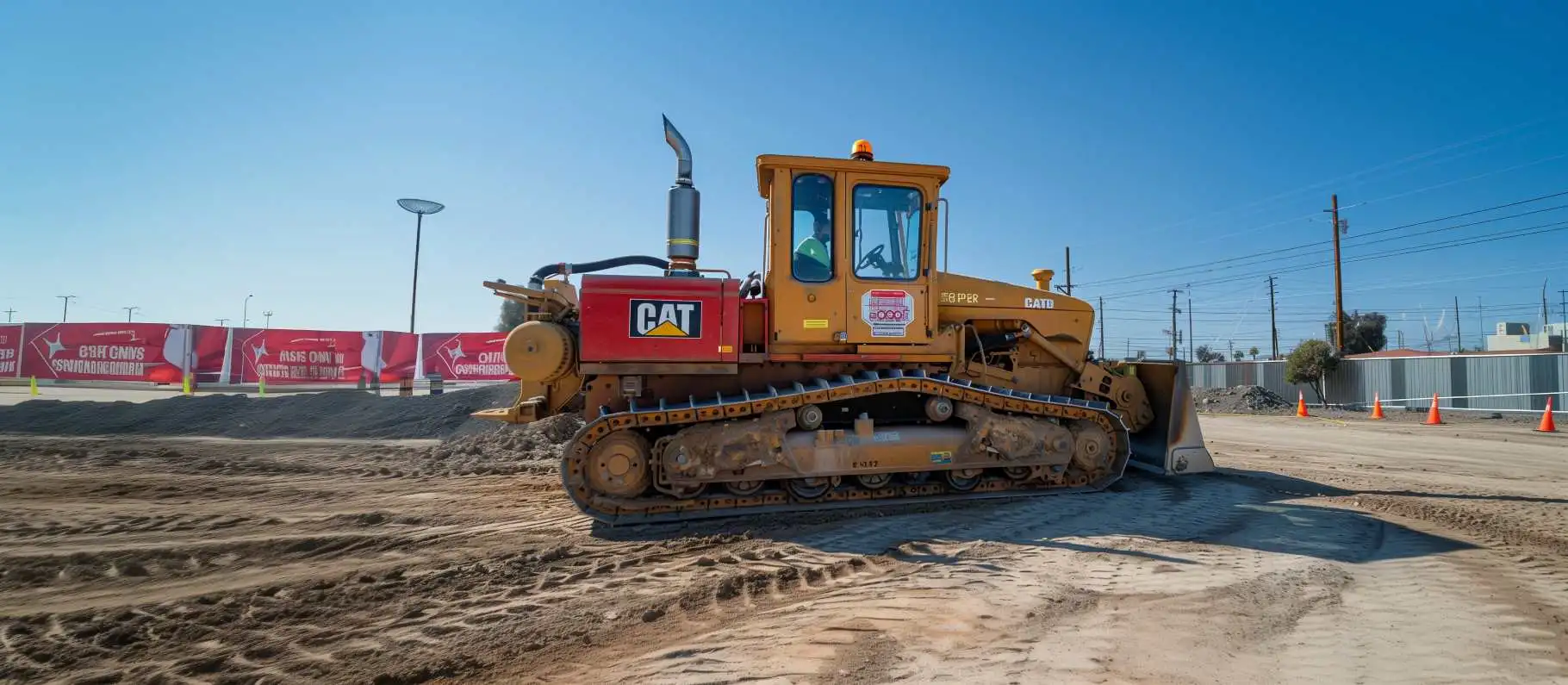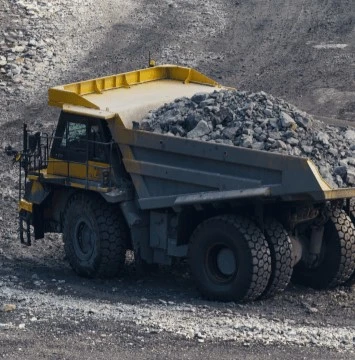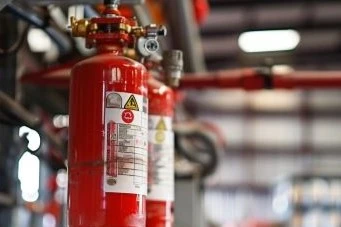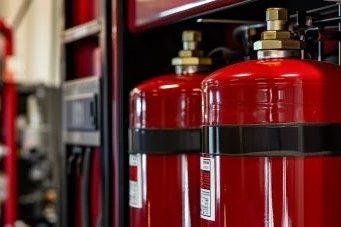

Vehicle Fire Suppression Systems
Vehicle Fire Suppression Systems
Fires are an inevitable risk to heavy-duty equipment. Steps can be taken to reduce that risk. Vehicle fire suppression systems, for instance, are widely regarded as the primary defense against vehicle fires. Companies spend millions of dollar on equipment yearly. Insuring industrial vehicles and employee safety are paramount to productivity. If you have 360 degree protection in place for your employees they are more than likely to be more productive. To make employees feel safe industrial vehicles should have a first aid kit, vehicle safety manual and a fire suppression system in place on all vehicles. Even public transportation vehicles should have all of these components in place for the driver. Because industrial and public transportation vehicles are in operation for long hours at a time they are more prone to a malfunction that can cause a fire.
Vehicle fire suppression systems are generally comprised of five components. These are fire detection sensors, a control panel to alert the operator, tanks filled with a fire-fighting agent, a means of either manual or automatic discharge, and a distribution network.


Protect Your Property
Get the latest fire safety tips delivered straight to your inbox.
Vehicle Fire Suppression System Installation
The NFPA has specific guidelines for the installation, testing, and maintenance of fire suppression systems. For that reason, these procedures should always be handled by certified professionals. Kord Fire Protection’s reliable and affordable services are in full accordance with NFPA standards. With decades of fire protection, Kord takes a proactive approach to service all of your vehicle fire system needs. Even before the installation phase, we conduct a full risk assessment to ensure your equipment has the best protection possible.
Vehicle Fire Suppression Testing
Regular testing is not just a requirement to keep your equipment in alignment with NFPA standards. It’s a proactive measure to ensure your equipment is ready to go in the event of a fire. By conducting regular tests, you are taking responsibility for the safety of your equipment and the people operating it.
Vehicle Fire Suppression System Repairs
Regular wear and tear is to be expected when operating heavy machinery. We understand the urgency of maintaining effective fire protection. Our experienced team responds promptly to address any issues and perform repairs with minimal disruption to your operations. Get your fire protection system back in top shape and ensure ongoing fire safety with dependable repair services by our highly skilled technicians.
Different Types Of Vehicle Fire Suppression Agents
When it comes to vehicle fire suppression, there is no one-size-fits-all approach. That’s why conducting risk assessments is vital when it comes to understanding which fire suppression agent will best suit your specific needs.


The main purpose of the vehicle fire suppression systems is to make sure that the fire is neutralized and does not reach the operator. The second is to completely extinguish the fire and limit damage to the vehicle. Because our systems are custom designed for the vehicle that your company owns or lease it will reduce the cost of insuring the vehicles even in industries with operators who may have accident history. Primarily our systems are based on AMEREX Vehicle Fire suppression Systems but we also have the capability to build a systems per your preferred manufacture requirements.
Are there specific regulations or standards that vehicle fire suppression systems must meet?
Yes! Vehicle/Car fire suppression systems must comply with industry standards like NFPA 17 for dry chemical systems or NFPA 2001 for clean agents, and ISO 14520 for gaseous systems. Specific vehicle regulations, such as those from MSHA for mining vehicles or EU Directive 2006/42/EC for machinery safety, also apply. Manufacturers provide installation guidelines, and local fire codes must be followed. Systems typically require testing and certification by recognized technicians to ensure they meet safety and performance standards for car fire suppression systems.
Vehicle Suppression Systems FAQs
What are common issues with vehicle fire suppression systems?
Common issues for fire suppression systems include hose cracking and distribution nozzle clogging. Components can also be moved during regular use, potentially leading to a variety of issues and inefficiencies.
How often should vehicle fire suppression systems be tested?
In addition to pre-shift and monthly inspections, vehicle fire suppression systems should be tested at least once every six months to ensure proper working order.
Can I perform repairs on a vehicle fire suppression system myself?
No, you should not try to repair a vehicle suppression system yourself. It needs special skills and knowledge to fix it correctly. Most places need a certified technician for repairs, and DIY work could also void the warranty. It’s best to call a professional to make sure everything is done right and safely.
What types of vehicles require fire suppression systems?
Common industries that use vehicle suppression systems include but are not limited to mining, oil, steel, waste handling, forestry, wood, paper, construction, and transportation. Of course, these systems are also common in various military vehicles, as well as coal and argiculture.
Types of Suppression Systems


Dry Chemical Agent
These dry chemical agents are extremely effective in fighting Class A standard fires, Class B gaseous and liquid fires, and Class C electrical fires. Dry chemical agents use a powder that quickly suffocates the flame, which is great for spaces like vehicle engine compartments. However, this method does have limited effectiveness in high-airflow environments.


Liquid Agent
Lliquid agents are conductive, this method is better suited to fighting Class A and B fires than Class C fires. The liquid agent works to quickly cool equipment and can prevent any reignition. Aside from being able to fight Class C fires, the potential drawback of liquid agents is that they require a larger system to extinguish the flame.


Dual Agent
Dual agents combine the best features of dry and liquid agents. This agent effectively fights Class A, B, and C fires by cooling the area and suffocating the flame. It’s a bit of a space saver compared to pure liquid agents and is even a bit more cost-effective than liquid-only systems.


Lets talk now?
Ensuring your automotive fire suppression system is certified is crucial for safeguarding your vehicle and occupants. Minimize the risk of equipment failure during critical moments. If you prefer speaking directly to an expert or emailing about automotive fire suppression system testing. instead of filling out a form, then choose one of the options below!

